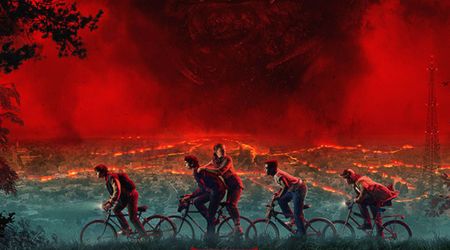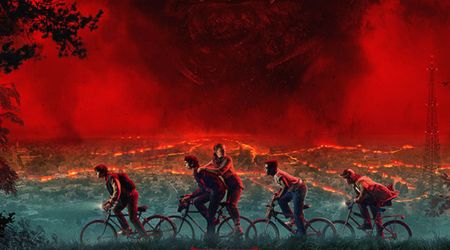'Kings of Pain': Adam Thorn and Rob Alleva's arms are bruised and bloody as they get stung by the worst

This week on 'Kings of Pain' is not for the faint of heart at all. With all three animals scoring high on the levels of the Pain Index, it was one hell of a Mexico trip for animal handler Rob Alleva and biologist Adam Thorn. And to think one of the animals didn't even have a brain! In Rob's ex-girlfriend's words, it was a shocker that someone without so much of a brain could sting so bad.
The duo is taking this journey to create a comprehensive pain index that will ultimately help save lives, adding to entomologist Dr. Justin O. Schmidt's pain index by adding more venom, fangs and a world of pain. While Dr. Schmidt's index was up till five, these guys are expanding it to 30, with three being the baseline for a honey bee sting.
The tarantula hawk (Pompilidae)
Pain Index score: 16, higher than the executioner wasp
The tarantula hawk is a wasp, that eats tarantulas. It is one of the largest parasitoid wasps, using their sting to paralyze their prey before dragging it to a brood nest as living food. They lay eggs into the prey and the larvae eat it way out of the spider while it's still very much alive. The female tarantula hawk wasp stings a tarantula between the legs and seals the entrance after the egg is laid on the spider's abdomen.

It's a massive wasp, half the size of an adult hand and it uses its front legs as grappling hooks. One of the blessings when it comes to this wasp is that they are relatively docile and rarely sting without provocation. The pain of the sting lasts for only about 5 minutes but burns like a lightning bolt. As the boys would put it, a hit of searing pain that goes away just as fast. While there is instant bruising after the sting, it doesn't stick around very long.
Harvester ants
Pain Index score: 20.5, beats the lionfish
According to Dr. Schmidt, one harvester ant bite is like a toenail being drilled for hours. The toxicity is 20 times that of a honey bee, the pain is like blunt force trauma - like a door being slammed shut on your fingers, really hard.

The ant has an alkaloid in its body that activates pheromones which in turn makes other ants in the colony come to its aid. The ant's bite is so bad, that the residual pain can last for days. Adam steps right into a colony, before jamming his hand into thousands of them on purpose and gets stung under the fingernail among other places up his arm - science is crazy, guys.
Crown of thorns starfish (Acanthaster planci)
Pain Index score: 19.5, also beats the lionfish
This starfish that gets its name from the crown of thorns that Jesus wore, is a marine animal covered in spiky thorns - all pretty potent. Although it preys upon hard, or stony, coral polyps, it can sting swimmers and divers in the ocean if they brush against it. Usually, by the time they know they've hit it, it's already too late. It is perhaps most common in Australia but does occur in the United States as well.

In humans, a brush against this spiky little creature immediately causes a sharp, stinging pain that can last for several hours, persistent bleeding due to the haemolytic effect of saponins, and nausea and tissue swelling that can last for a week or even more. Sometimes, the spines get stuck in the tissue and you may need surgery.
A "shockingly" painful sting that feels like a sharp stabbing pain, similar to that of a broken bone, this was one of the highest ever tested.
Can't wait for the next episode? Catch it on History every Tuesday at 10/9c.










